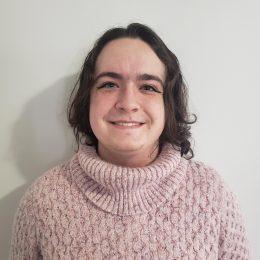
Later this week, Margaret Atwood, author of “The Handmaid’s Tale,” will be coming to campus. For my penultimate column, I don’t want to write a hit piece, but a genuine critique of some of the mixed messages Atwood has given in the past toward the trans and queer community.
My main gripe is with an article Atwood shared last year on Twitter, giving a Toronto Star opinions writer Rosie DiManno enormous exposure to Atwood’s 2 million followers. This column, titled “Why can’t we say ‘woman’ anymore?” claims that “language radicals” are pursuing the “erasure of women.” This “mob” silences defenseless dissenters like DiManno herself. Or, as I prefer to frame her, well-known columnists for major newspapers who can broadcast their message to hundreds of thousands.
I won’t be getting into the disputed facts of this article, but I instead just want to focus on the faulty logic and reactionary tendencies that DiManno exhibits in her writing and why Atwood was quite irresponsible by giving this nonsense a megaphone.
The article argues that we shouldn’t use terms like “pregnant people” or “people with a cervix” in any circumstance and instead use gendered terms like “women.” Why is this not inclusive? Because trans men, intersex and nonbinary people may, for example, get pregnant or have a cervix, and they may not identify as women. It’s really that simple. Think about it like this: if you’re worried about someone’s risk for ovarian cancer, the important thing isn’t whether that person is a woman. What matters is whether they have ovaries, among other physical risk factors. Just because the majority of people who have ovaries identify as women doesn’t mean we should ignore, ostracize or stigmatize everyone who doesn’t fit into that category. Thus, gender-inclusive language prevents the erasure of marginalized groups that DiManno is attempting to conveniently overlook.
I want to spend more time on that point because it’s a go-to for many trans-exclusionary feminists. They claim this inclusive language erases women’s representation, but I strongly disagree. Feminism to me means challenging the social construct of gender and helping all people — including men, women and nonbinary people — pursue the life they want, free from these social restrictions. What does that gibberish mean? It means embracing an intersectional lens of feminism where we all must stand in solidarity with people who are oppressed — even men, who are oppressed by gender as well. If you care about women’s health, that’s not just about reproductive rights. It’s about gender-affirming care for trans women. It’s about the mental health of overworked, low-income women. It’s about protections for women of color from police abuse. If you care about women’s health, that doesn’t start nor stop at a uterus.
But beyond reasoned philosophical discussion, I found DiManno’s commentary tasteless, as it falls into the very common trans-exclusionary feminist pattern of weaponizing transphobia under the guise of protecting women. I find it very rich that someone who claims to be fighting against erasure will then go on to say, “Women have abortions. Or, I suppose, in the tiniest of numbers, people born with female genitals who identify as male or fluid can terminate a pregnancy.” No, Rosie. People who can get pregnant have abortions. It’s not hard — it’s just biology.
Why am I spending so much time on DiManno? Because Atwood gave her a massive audience when she shared this article to her 2 million followers, seemingly in support of DiManno’s premises at the very least. Public figures should be held to a higher standard, as they aren’t just average citizens, but people who command an online army. And spreading reactionary content with a layer of transphobia isn’t what I would call the pinnacle of feminist praxis.
I’ll give credit where it’s due, and I genuinely don’t think Atwood is some raging transphobe. Atwood, on numerous occasions, has positively affirmed the existence of trans people, recognized the difference of gender and sex and rejected strict gender binaries. In her own words: “It is not true that there are no trans people.” But at the same time, this is why her sharing of a blatant hit piece targeting the trans community is even more objectionable and disappointing.
We all need to be careful when sharing sensational and misleading stories online, often inadvertently. Public figures need to be held to a higher standard, not lower. In other contexts, Atwood has made it clear that she does not stand with hate, and that she stands with all queer people. If that’s the real Margaret Atwood, great! But I will not be so naive as to think that any of us are saints or above reproach.
Eleanor Gully is a senior triple-majoring in French, economics and philosophy, politics and law.


